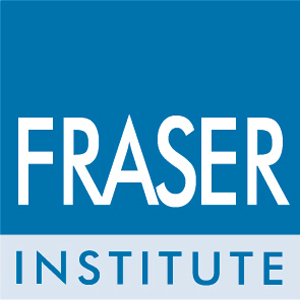Change to Old Age Security would assist low income seniors
The Fraser Institute
Reforming Old Age Security by changing the income level at which seniors are eligible and reducing the amount clawed back from seniors still in the work force would allow the government to better assist low-income seniors, concludes a new study published today by the Fraser Institute, an independent, non-partisan Canadian public policy think-tank.
Under the current system, those aged 65-plus can earn up to $70,954 and still receive full OAS payments while seniors with incomes up to $114,670 receive partial payments. Currently, more than 950,000 seniors (17.5 per cent of Canada’s seniors) have incomes greater than $50,000 annually. By comparison, the average annual wage of a typical Canadian worker is $45,776.
In Reforming Old Age Security: A Good Start but Incomplete, authors Jason Clemens, Niels Veldhuis, and Milagros Palacios suggest changing the eligibility for OAS benefits to better target lower and middle-income seniors. Specifically, they recommend paying full OAS benefits to seniors with up to $51,100 in annual income, and partial payments for those with incomes between $51,100 and $94,787. In other words, low-income and middle-income seniors will see no change in their OAS benefits.
“With limited resources and budget deficits across the country, governments must refocus their efforts and spending on key priorities. Redistributing tax money from workers to seniors with incomes higher than the national average is unsound policy,” Clemens said.
Clemens also points out that since OAS benefits are calculated on an individual basis, it’s possible for two seniors living together to have a household income of $141,908 and still qualify for full OAS payments.
“Ottawa could find savings within OAS by re-evaluating payments paid to higher income seniors and reforming the eligibility criteria. This would allow improved targeting of benefits for low-income seniors, particularly those living in high-cost regions, thereby helping seniors struggling with low-incomes.”
Better targeting of OAS benefits as suggested in the study would yield $730 million in savings today, which would increase over time as proportionately more Canadians become eligible for retirement programs.
The authors suggest a wide array of potential uses for the savings, including re-examining the benefits paid to single, low-income seniors and enhancing the programs in place for working Canadians to save such as RRSPs and TFSAs.
The authors also propose a second reform to eliminate a barrier faced by seniors wishing to remain active in the labour force. The change involves adjusting the 15 per cent OAS Recovery Tax, or “OAS clawback.” Currently, seniors with incomes between $70,954 and $114,670 are taxed an additional 15 per cent on all income over $70,954 – to proportionally reduce the amount of OAS benefits received.
In effect, that tax discourages seniors from working because it’s levied on top of their regular income taxes. The Recovery Tax asks seniors to fork over between 47 per cent and 54.4 per cent of their additional earnings, depending on the province in which they live. Why would seniors work, Clemens pondered, when the government will keep roughly half, if not more out of every extra dollar earned?
In 2012 the federal government announced it was reforming OAS so that seniors will start collecting benefits at age 67 rather than 65 as they do now. This change will be phased in starting in 2023 and be fully in place by 2029.

























